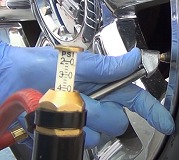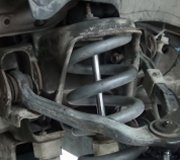It sounds like you're seriously over-thinking the issue. I've been a suspension and alignment specialist for over 25 years and have never been asked these questions or given it much thought. All tire pressures are listed somewhere on the car and are for cold tires. The pressures are expected to go up when the tires heat up so if you want to know what normal is, set the pressures when they're cold, drive your normal distance, then measure the pressures when they're hot.
The only conversion factor I've ever heard of is that, as I recall, the pressure will drop a pound for every ten degrees F, but that's for a tire that's standing still. Every tire is going to heat up differently based on numerous characteristics such as thickness of the rubber, how much the sidewalls flex, (which builds heat quickly), how much the tire sticks to the road, (friction also creates heat). No two brands of tire will be the same. Your type of driving will also affect how much heat builds up. Stop and go city driving generates a lot of heat. Straight highway driving, ... Not so much. If you've ever watched an interview of a NASCAR race driver, they know all about how to cool off their tires while going 190 mph, and how to get them warmed up when they want to.
Wednesday, August 6th, 2014 AT 8:49 PM



